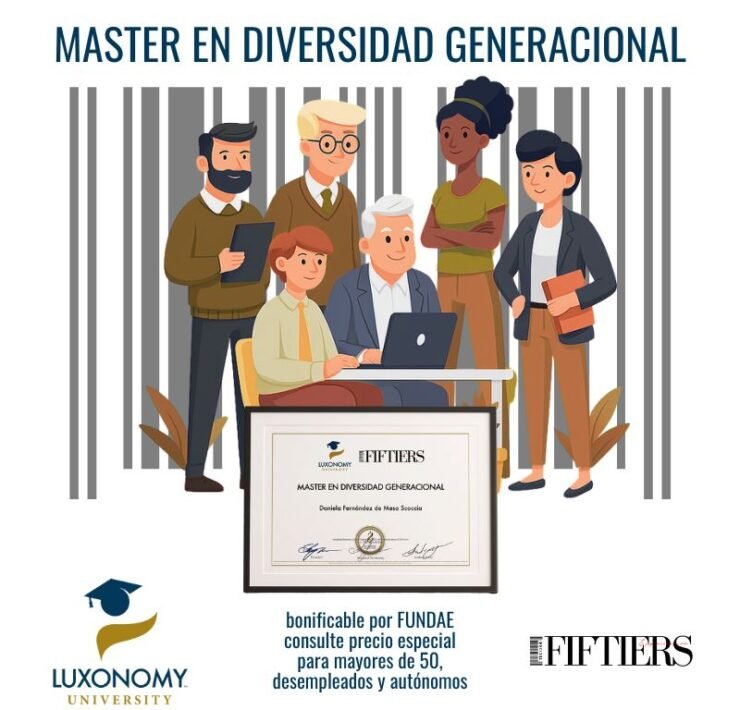Human Libraries: Lend Your Experience as a Living Book

FIFTIERS | Life Begins at 50. La vida comienza a…
The concept of human libraries emerges as an innovative initiative to share knowledge and experiences in a direct and personal manner. Instead of borrowing printed books, people can “lend” their own experiences and insights as “living books.” This allows participants to explore topics and areas of interest uniquely and enriching. The diversity of human libraries can range from experts in science and technology to artists, writers, athletes, and other professionals willing to share their accumulated wisdom and knowledge.
Benefits of Human Libraries
Human libraries offer various benefits for both “lenders” and “readers.” Some of these benefits include:
- Direct Connection with Experts: Allows people to connect directly with experts in different fields, which can be especially valuable for those seeking guidance or specialized advice.
- Experiential Learning: Provides an opportunity to learn from others’ practical, firsthand experiences, which can be more enriching than reading a book or attending a lecture.
- Community Connection: Helps create a community of individuals interested in sharing and learning, fostering connections and dialogue across different groups and generations.
- Personal Development: For “lenders,” sharing their experiences can be an opportunity to reflect on their own growth and achievements; for “readers,” it can inspire new personal interests and goals.
Implementation and Operation
Implementing a human library can vary based on context and available resources. However, it generally involves the following steps:
- Identification of “Living Books”: Selecting people willing to share their experiences and knowledge.
- Catalog Creation: Developing a catalog or database listing available “living books,” along with a brief description of their area of expertise or experience.
- Session Organization: Coordinating meetings between “readers” and “living books,” either individually or in small groups.
- Evaluation and Feedback: Implementing a system to gather comments and suggestions from both “lenders” and “readers” to improve and expand the human library’s offerings.
Examples of Human Libraries in Action
Around the world, various initiatives have adopted the human library concept, each with its unique approach. Some examples include:
- Oral History Libraries: Projects collecting and sharing life stories from individuals who have experienced significant historical events or have unique experiences to share.
- Mentorship Programs: Initiatives pairing more experienced individuals with those seeking guidance in specific areas such as careers, entrepreneurship, or arts.
- Wisdom Festivals: Events bringing together various “living books” to share knowledge and experiences through lectures, workshops, or dialogue sessions.
- Online Platforms: Websites and mobile apps connecting “lenders” and “readers” via video conferencing, discussion forums, and online educational resources.
Challenges and Future Opportunities
As human libraries continue to evolve, they face challenges such as expanding their reach, diversifying their collections of experts, and securing sustainable funding. However, these initiatives also offer significant opportunities to:
- Strengthen Communities: By encouraging knowledge and experience exchange, human libraries can build more cohesive and supportive communities.
- Promote Lifelong Learning: By providing access to diverse experiences and wisdom, these libraries can inspire individuals to continue learning and growing at different life stages.
- Diversify Education: Offering an alternative or complement to formal education, human libraries can make learning more accessible and engaging for a broader audience.
Technology as a Supporting Tool
Technology plays a crucial role in developing and expanding human libraries. Online platforms, social media, and video conferencing tools enable:
- Global Connections: Facilitating connections between “lenders” and “readers” worldwide, breaking geographic and cultural barriers.
- Expanded Access: Providing the possibility to access “living books” and experiences that might otherwise be difficult to reach due to distance or availability.
- Content Creation: Allowing recording and sharing sessions, creating a knowledge repository accessible anytime and anywhere.
The Role of Community in the Success of Human Libraries
The success of human libraries heavily depends on community engagement and active participation, including:
- Voluntary Assistance: Contributions of time and skills from volunteers to help organize, promote, and execute human library activities.
- Donations and Sponsorships: Financial support from individuals, organizations, and businesses to cover operating costs and expansion of human libraries.
- Inter-institutional Collaboration: Cooperation with other organizations, schools, and traditional libraries to expand the reach and impact of human library initiatives.
In summary, human libraries represent a unique opportunity for interpersonal connection, personal growth, and community development. As we continue to explore and expand this concept, it is essential to remember that its true value lies in inspiring, educating, and bringing people together through the exchange of experiences and wisdom.
Discover more from FIFTIERS
Subscribe to get the latest posts sent to your email.















